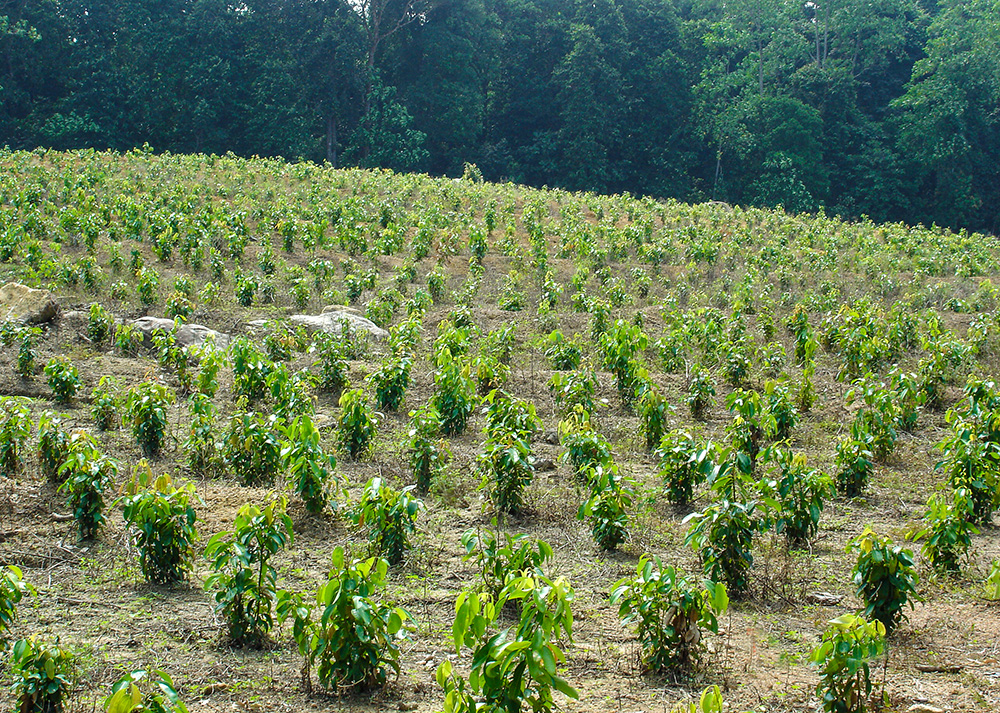- This topic is empty.
- AuthorPosts
- Januari 21, 2025 at 11:12 um #542940
 Agric4ProfitsKeymaster
Agric4ProfitsKeymaster
Cinnamon, known for its aromatic flavor and various medicinal properties, has been cherished for centuries as a valuable spice.
Cultivating cinnamon requires careful planning and preparation to ensure successful growth and a healthy yield. Whether you’re a seasoned farmer or a hobbyist gardener, understanding the proper steps to prepare land for cinnamon cultivation is essential.
In this article, we will guide you through the process to help you grow this precious spice right in your own backyard.
1. Choosing the Right Location
The first step in preparing land for cinnamon cultivation is selecting the ideal location. Cinnamon thrives in tropical climates, preferring well-draining soil with a pH range of 5.5 to 7.5.
It requires a humid environment with plenty of sunlight, so choosing a site with partial shade is preferable. If you live in a region that experiences harsh winters, consider growing cinnamon in a greenhouse or indoors.
2. Soil Preparation
Once you have chosen the location, it’s time to prepare the soil. Begin by clearing the land of any debris, rocks, or weeds that may obstruct the growth of cinnamon plants.
Cinnamon prefers loose, fertile soil, so incorporating organic matter like compost or well-rotted manure will enhance soil structure and nutrient content. Use a shovel or a tiller to turn over the soil, ensuring that it is well-aerated and free of clumps.
3. Propagation and Planting
Cinnamon can be propagated through seeds or cuttings. Seeds take longer to germinate and grow into mature plants, so using cuttings from a healthy cinnamon tree is a more popular method.
Obtain cuttings from a reputable source or an established cinnamon tree, making sure they are at least 6-8 inches long with several leaves.
Plant the cuttings in the prepared soil at a depth of 2-3 inches, leaving one or two nodes above the ground. Water the cuttings generously after planting.
4. Providing Adequate Water
Cinnamon plants require consistent moisture, especially during their initial growth stages. While they do not like waterlogged soil, ensure that the plants receive enough water to keep the soil evenly moist.
Use a drip irrigation system or water the plants at their base to avoid wetting the leaves, which could lead to fungal diseases.
5. Mulching
Mulching is an important step in cinnamon cultivation, as it helps conserve soil moisture, suppresses weed growth, and adds nutrients to the soil as it decomposes.
Apply a layer of organic mulch, such as straw or wood chips, around the cinnamon plants, leaving some space around the base to prevent direct contact with the stem.
6. Pruning and Training
As your cinnamon plants grow, they may need pruning to encourage branching and denser growth. Regularly trim away dead or diseased branches, and shape the plants to maintain an open canopy that allows sunlight to penetrate evenly. Training the cinnamon plants to grow as bushes can make harvesting easier and more efficient.
7. Fertilization
Fertilize the cinnamon plants with a balanced, slow-release fertilizer to provide them with essential nutrients throughout the growing season.
Follow the manufacturer’s instructions and avoid over-fertilization, as this can lead to excessive vegetative growth with reduced spice quality.
8. Pest and Disease Management
Keep a close eye on your cinnamon plants for any signs of pests or diseases. Common pests that can affect cinnamon include scale insects, mites, and aphids.
Apply organic insecticides or neem oil to control pests if necessary. Additionally, ensure good air circulation and avoid overwatering to prevent fungal diseases like root rot and leaf spot.
In conclusion, cultivating cinnamon requires dedication and attention to detail, but the reward is undoubtedly worth the effort. By selecting the right location, preparing the soil adequately, and providing proper care, you can enjoy the satisfaction of growing your own cinnamon and harvesting the flavorful spice to enrich your culinary delights and improve your well-being.
With patience and knowledge, you can transform your land into a thriving cinnamon plantation, bringing the exotic aroma and taste of this beloved spice right into your home.
- AuthorPosts
- You must be logged in to reply to this topic.

